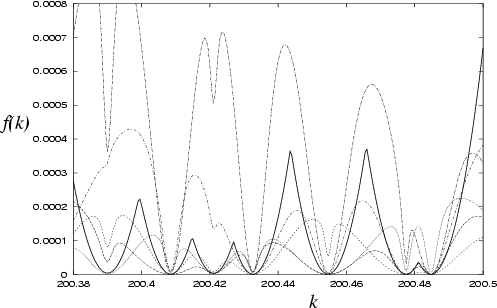The choice of norm matrix
Accurate evaluation of ![]() is a rapid procedure
because it only involves integration over the boundary
is a rapid procedure
because it only involves integration over the boundary ![]() .
It requires
.
It requires ![]() basis function evaluations,
where the number of discretization points on the boundary is
basis function evaluations,
where the number of discretization points on the boundary is
![]() (see Appendix G).
However the evaluation of the norm matrix
(see Appendix G).
However the evaluation of the norm matrix ![]() at first sight seems like a
tremendous bottleneck.
Eq.(5.13) for
at first sight seems like a
tremendous bottleneck.
Eq.(5.13) for ![]() involves computing
involves computing ![]() overlaps
overlaps
![]() each of which is a
each of which is a ![]() dimensional
integral over the domain.
Since the
dimensional
integral over the domain.
Since the
![]() are oscillatory at scale
are oscillatory at scale ![]() , each integral
would require
, each integral
would require ![]() basis function evaluations, and the construction
of
basis function evaluations, and the construction
of ![]() would scale as
would scale as ![]() .
If this were performed literally, then much of the advantage of
a surface method would be lost.
In fact, in any implementation of the
PWDM as originally described,
almost all the time is spent performing normalizations
over the domain, which is wasteful.
.
If this were performed literally, then much of the advantage of
a surface method would be lost.
In fact, in any implementation of the
PWDM as originally described,
almost all the time is spent performing normalizations
over the domain, which is wasteful.
The aim of this section is to describe more rapid evaluations
of ![]() , both approximate and exact, which scale like the boundary.
(In Section 5.5 we will see that the accuracy of
, both approximate and exact, which scale like the boundary.
(In Section 5.5 we will see that the accuracy of ![]() needed is
actually quite low).
needed is
actually quite low).
 |